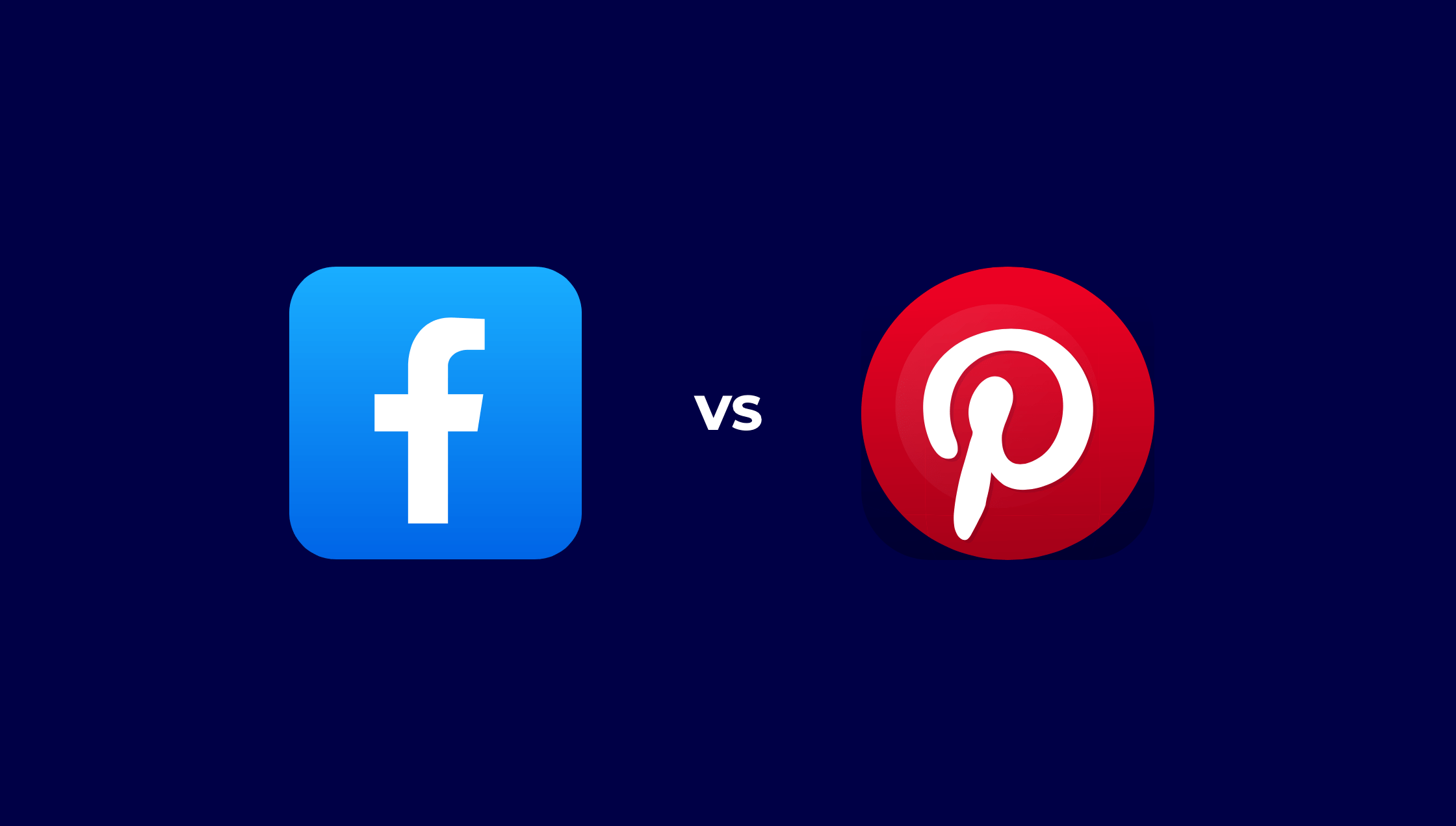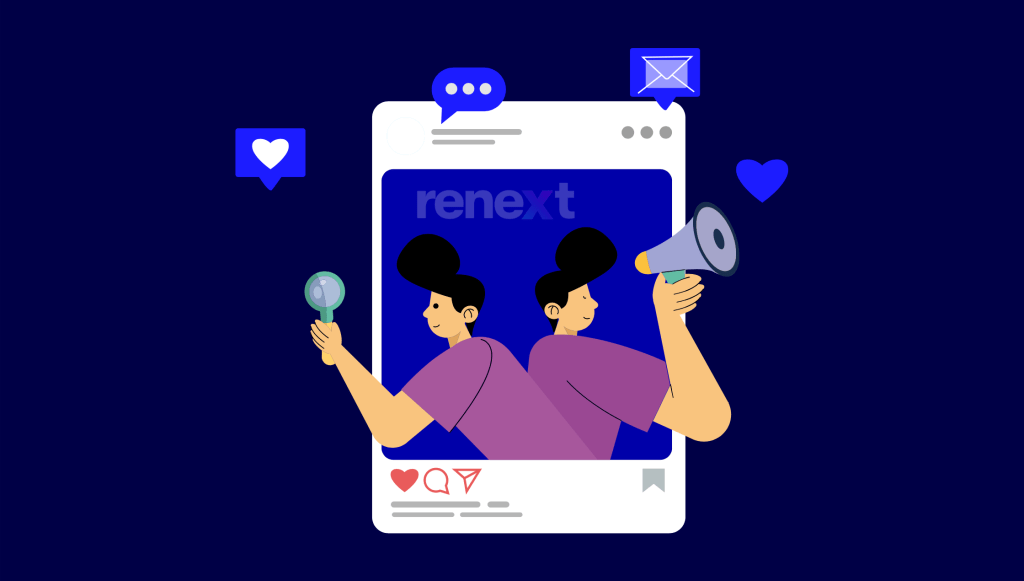
What is the difference between Pinterest Ads and Facebook Ads? Which is superior? Where should you put your money? There has been a lot of debate between these two ad platforms over the years, so let’s talk about the differences without bias.
There has been a long debate about both of these platforms, and many marketers will come out and state unequivocally which is superior. To be honest, no ad platform can be superior to the others because of the courses or services they wish to provide.Selling your services or products is not a bad thing; in fact, you should do it. Sales is a type of service.
Social Media Advertising
Consider how advertising used to be done with billboards, television commercials, and radio commercials. Businesses would spend hundreds or thousands of dollars for a space on a billboard that could be seen by anybody. However, there is no method to target individuals who are truly interested in your product or service.
Fortunately, the internet has enabled us to interact with like-minded people and consumers. Because the globe is becoming more digital, social media sites such as Facebook and Pinterest offer a global user base that businesses can use to reach their particular target audiences.
Facebook and Pinterest collect data and cookies from its monthly active users to better understand their activities and interests. They, in other words, they monitor human interactions.
So, when you decide to display an ad, you can tell each platform who you want to see your advertising based on certain demographics and interests that you can incorporate into your campaigns.
Effective Social Media Advertising
People are actively looking for inspiration because Pinterest functions mostly as a search engine. To reach the proper audience, use suitable keywords in your ad copy and description.
People generally interact on the social media site Facebook. Targeting people based on their interests is preferable. It works best when combined with Google AdWords since customers who are actively looking for your goods are more inclined to buy.
- Try new things till you succeed rather than making an advertisement and hoping for the best. You can make several variations of your advertisement and compare their performance to determine which works the best.
- You can target people who have already interacted with your content by retargeting them in addition to focusing on characteristics like age, gender, geography, hobbies, and behaviours. While Facebook offers the lookalike audience function to find new consumers who are similar to current customers, Pinterest allows keyword targeting.
- Before launching, establish particular key performance indicators and objectives. Then, use the analytics tools to continue tweaking as necessary to ensure the success of your marketing initiatives.
- Users on Facebook and Pinterest get flooded with graphics and other advertisements in addition to the requirement that you advertise visually on these sites. For it to get noticed, yours must be visually appealing.
Facebook Ads
Facebook advertising appears in a variety of places on the Facebook network, including the main feed, Facebook Messenger, and Facebook Stories. Facebook ads come in a variety of creative formats, and different sorts of placements can be used to achieve different goals.
While static picture and video advertising are ideal for increasing brand recognition, formats such as Collection ads are designed to encourage cost-effective purchases.
Because of the massive quantity of data that Facebook collects about its users, these advertising can also be targeted at specific audience segments. Whether you want to target a large worldwide audience or a specific type of customer in a specific place, Facebook advertisements can assist you.

Pinterest Ads
Pinterest is centred on eye-catching aesthetics and content discovery. Pinterest posts are delivered in the form of ‘Pins,’ which are simply visual bookmarks that users may interact with.
Pinterest advertisements are called ‘Promoted Pins’; they appear in the same way as organic posts. These can be clicked, saved, shared, and so on. The most important thing is that they can also be targeted to specific audiences.
Pinterest ads are typically displayed in the main feed, where they are highly visible and served amid a plethora of engaging content from other businesses, publications, and users. This is why Pinterest marketers require attention-grabbing assets.

Functioning of Facebook and Pinterest Ads
Ads occur on Facebook in a variety of places, including the newsfeed, articles, and Facebook Marketplace, among others. Because of the Meta link, your ads may be displayed on Instagram as well, possibly reaching consumers who do not use Facebook.
Facebook advertising comes in a variety of formats, including photos, videos, carousels, slideshow ads, and more. Advertisers select a budget and compete in an auction system for ad spaces.
Pinterest advertisements can be found in a user’s home feed, search results, and related pins section. Promoted pins can be made available as photos, videos, or app icons. Pinterest has a similar auction process for marketers.
Because advertisements on both platforms communicate visually, so aesthetically appealing and attention-grabbing material is essential.
Comparing Facebook and Pinterest Ads
Differences exist between the two advertising platforms, and for most businesses, there are specific situations when it’s suitable to advertise on either of them.
However, an important factor to consider when deciding to advertise on these platforms is whether the target audience is active there. If the audience is not present on a particular platform, it might not be wise to allocate the advertising budget to that platform.
1. Targeting Options
You have a lot of targeting choices with the Facebook advertisements platform. Because of the quantity of data Facebook has on us, targeting can become extremely granular.
- App users
- Devices
- Behaviour
- Age, gender, education, employment, household, and lifestyle details
- Location
- Interests
- Connections
- Languages
- Site visitors
- Contact lists
While there are numerous audiences you may create on Facebook, it is often best to go broad. Your strategy will differ depending on your target audience, offer, conversion time, and so on.
The keyword targeting function is one of the biggest distinctions between Facebook and Pinterest. Because pinners use Pinterest as a search engine, the search bar is its most important feature.
- Lookalike audiences
- Site visitors
- Age, gender, languages, device, location
- Browse & search
- Interests
- Custom audience uploads
- Engagement audience
- Expanded
- Keywords
2. Audience
Facebook has a staggering 3 billion monthly active users, making it a really massive platform. This shouldn’t come as a surprise as Facebook was the first social network to surpass one billion registered users.
On the other hand, Pinterest draws about 465 million active users per month.
3. Intention
Facebook users typically utilise it to communicate with their family and friends. They provide a platform for social networking and communities. Because they aren’t shopping on Facebook when they encounter ads, they are more likely to make impulsive purchases.
They are on the platform participating in communities, therefore if they see your advertisement while they are there, you win.
Pinterest users use the site to seek and plan, thus their motivations range.Most pinners start their content searches before they actually need it. They strategically prepare and carry out their plans, and I advise my clients and students to do the same when using Pinterest.
4. Ad Formats
- Carousel ads
- Collection ads
- Messenger ads
- Image ads
- Video ads
- Stories ads
- Collection ads
- Idea ads
- Video ads
- Shopping ads
- Carousel ads
- Image ads
There is obviously a lot of crossover in this. Both networks offer popular forms (such as picture, video, carousel, and collection) and placements that are intended to encourage online purchases: shopping advertisements on Pinterest and advantage+ catalogue ads on Facebook.
5. Objectives
- Traffic
- Conversion
- Traffic
- Video views
- Brand Awareness
- Consideration
- Video views
- Web Sessions
- Brand awareness
- Catalogue sales
- Conversions
6. Images & Visuals
Facebook allows you more creative freedom with images. In addition to including video and dynamic graphics, you can add text to your photographs.
The capacity to construct an entire novel in ad text to persuade someone to purchase your goods is the biggest benefit of Facebook ad assets.
You don’t get a lengthy block of text to accompany your image with Pinterest advertisements. You must produce an image or video that is engaging enough to persuade them to click and act.
In order to prevent confusion when users land, the Pinterest advertisement must be extremely compelling and precisely resemble the landing page. They won’t see a description unless they save your ad image, and frequently the descriptions are not displayed on the pin when you save an ad.

7. Cost & Pricing
The typical price for Facebook advertising is $0.26 to $0.30 per click, $1.01 to $3.00 for 1000 impressions, $0.00 to $0.25 for a like, and $0.00 to $5.00 for a download. Your audience, ad budget, industry, and other factors will all affect how much you pay for Facebook ads.
It’s critical to remember that these figures are merely averages. Due to several factors, including ad placement, target market, industry, and more, your company may experience higher or reduced Facebook ad prices.
For your company’s Facebook advertising initiatives, you should use these sums as a guide rather than as the gold standard. If not, you run the danger of creating inflated hopes for your campaign, which could lead to underwhelming results and disgruntled business leaders.
Per click, conversion, and 1000 impressions, Pinterest advertising typically costs $0.00 to $0.10, $0.00 to $2.00, and $0.00 to $1.50. Your company’s objectives, industry, budget, and other criteria will all have an impact on how much you pay for Pinterest advertisements.

Ease of Use
Both of these social networks are made to be intuitive, accessible, and practical for marketers because they understand the value of advertisement income.
Although Facebook may provide significantly more sophisticated and intricate audience targeting methods, with enough practice, you’ll find both sites to be user-friendly.
Additionally, both websites offer account teams and customer assistance that can address any problems or queries you might have.
Wrapping Up
It’s crucial to understand that choosing between Facebook Ads and Pinterest Ads doesn’t come down to one being unquestionably superior to the other. It’s more important to comprehend their distinctive characteristics and determine which one best fits your company’s objectives and target market.
While Pinterest is a medium that specialises at inspiring and planning, Facebook is where people connect and frequently make impulsive purchases. This makes it especially appropriate for companies that offer goods or services that are appealing to the eye.
Both platforms provide multiple ad types, pricing options, and ways to target and interact with your audience. The use of text and photos in your Facebook ads is more flexible than it is on Pinterest, which places more of an emphasis on eye-catching graphics.
The final decision should be made after carefully considering your audience, the objectives of your campaign, and the aesthetic appeal of your content. You can decide where to use your advertising money to receive the best returns for your company by carefully weighing these considerations.





